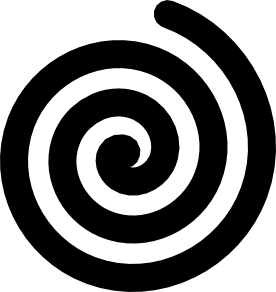My name is Dylan and you've stumbled upon my quest. I am seeking to explore the realities of what it is to know and to worship the one that is the Horned God, the Lord, and the "God of Wicca." Now, before I prattle on more (if you choose to read it), you should know a bit more about me. I have been studying Wicca on my own for the past several years. It has always been an intriguing faith to me, and one that I have gotten to know rather intimately. I have been informally practicing as a solitary practitioner sporadically throughout those years. As a 20-year-old gay man, the Goddess has drawn me in from the beginning. I've felt Her love, seen Her upon Her throne (for though She is a mother to me, She is most certainly a queen-mother), and come to know Her through many Faces. Why, then, has Her consort been such an afterthought for many of those years? Oh sure, He's there, He's addressed, but where's my relationship with Him?
Now we've gotten to the meat of the quest. For months now, I have been exploring my masculinity and, in turn, finding the God inside of me. My primary goal for this blog is to survey this personal growth and explore the concept of the Horned God.
Who is the Spiral God? What about the Spiral Goddess? First, we need to understand the symbol as it pertains to the God and Goddess mythology.
Who is the Spiral God? What about the Spiral Goddess? First, we need to understand the symbol as it pertains to the God and Goddess mythology.
The spiral is usually applied to the Goddess to signify elements of creation, the turning of the Wheel, and death and rebirth (especially when the spiral is placed upon the womb on Goddess icons). Beyond that, it represents the idea that a circle is unending and eternal. The spiral is also a symbol that occurs regularly in nature, such as on seashells, in weather patterns, pine cones, animal horns, galaxies, and even our very own DNA. It is such a deceptively simple symbol that I think many of us overlook it in favor of the more obviously powerful symbols such as the pentacle.
So who is the Spiral God? In my personal experience, I've never seen the spiral applied to the God (with the exception of a statue here and there). However, I think the symbolism can be equally applied to Her Consort. Throughout the year, He goes from dying to being reborn to ruling alongside the Goddess. This is a cycle that is repeated season after season in a spiraling nature. This spring and last spring aren't the "same" spring, but yet they are both spring. Each time the wheel turns, the spiral continues. So in this way, He is the spiral alongside the Goddess.
These are rough ideas that I am constantly exploring. There are certainly more ways the spiral applies to both the God and the Goddess, but that is for future posts. :) For now, I leave you with a quote and bright blessings.
"The growth of understanding follows an ascending spiral rather than a straight line." -Marion Milner under her pseudonym, Joanna Field.
-Dylan Whitestag
(Questions? Comments? Reply to this blog post!)

I think that the Sacred Feminine is given much more thought than the Divine Masculine. This is sad and creates an imbalance. Goddess Within, Goddess Without. God Within, God Without. Macrocosm and Microcosm. Regardless of our sexuality, these are two aspects of self and deity that we need to eventually meet and get comfy with. Best wishes to you on your journey!
ReplyDelete